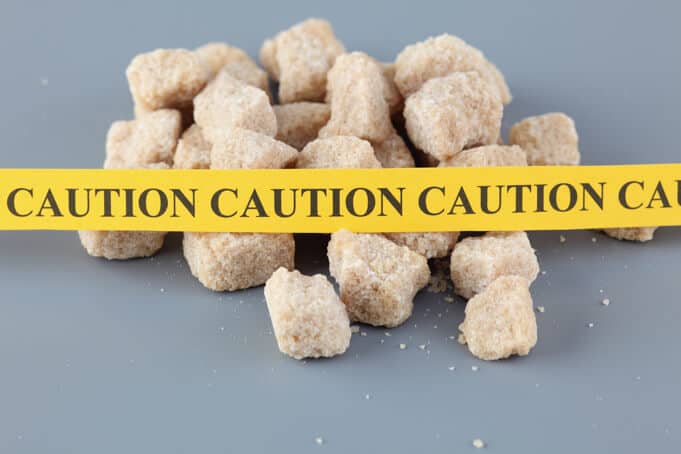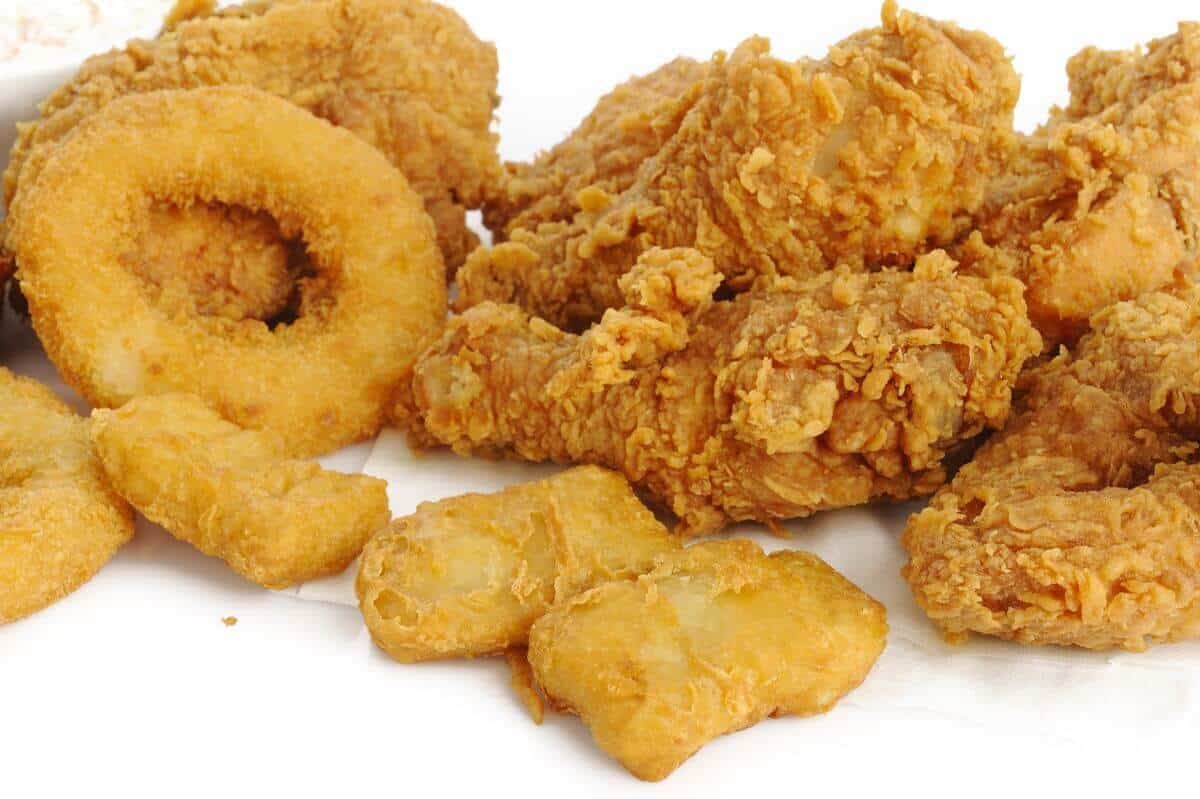
Most acne sufferers know that their diet is at least partially responsible for their condition, but it can be difficult to discern exactly what foods they should and shouldn’t be eating. For many years the scientific community denied the link between diet and acne.
But 21st century research has shown the real myth is diet does not cause acne. Modern studies have not only revealed that past experiments refuting this link were fundamentally flawed, but also shed light on exactly which types of foods acne sufferers should avoid.
1. Dairy and Sugar (Cakes, candy, milk-especially skimmed)
It is well-documented that diets high in sugar and acne are related. These foods have a high glycemic index. Foods with a high glycemic index spike blood sugar levels, which then leads to a cascading reaction that increases the hormones linked to acne.

Desserts like cakes, pies, and cookies all have a high GI. A 2007 study by the Harvard School of Public Health found that not only were dairy products linked to acne, but subjects who regularly drank skimmed milk were 44 percent more likely to develop acne.
2. Phytoestrogens (soy, flax and sesame seed)
Phytoestrogens are normally touted as health foods in the popular media, but they can spell a disaster for women with acne by aggravating the hormonal imbalances linked to the condition. Excessive phytoestrogen consumption reduces estrogen levels by blocking receptors that estrogen regularly binds to, disrupting the delicate balance of estrogen and androgen in the female body.
Furthermore, phytoestrogens block the conversion of testosterone to estrogens. A diet rich in phytoestrogens can reduce your estrogen by as much as 30 percent, leading to acne-causing hormonal imbalances.
Phytoestrogens are highly concentrated in soy beans, flax and sesame seeds. Experts have suggested that removing these foods from your diet can reduce your phytoestrogen intake by up to 90 percent.
3. FODMAPs (garlic, onion, wheat products)
If you’re unfamiliar with the term, FODMAP is an acronym for Fermentable Oligosaccharides, Disaccharides, Monosaccharides, and Polyols. These short chain carbohydrates are poorly absorbed and pass largely untouched into the large intestine where bacteria ferment them. Rapid fermentation creates lot of gas that leads to bloating, abdominal discomfort and other gut problems.

A study done by the Department of Internal Medicine at the University of Genoa found that acne patients are much more likely to have Small Intestinal Bacterial Overgrowth, or SIBO, than those with clear skin. When the test patients’ SIBO was treated, they experienced immediate and significant acne reduction. While doctors have suggested for years that stomach health and acne may be related, recent studies like this one are providing solid proof that acne can be greatly reduced by improving gut health.
The best way to avoid triggering SIBO and the acne it can create is to remove FODMAPs from your diet. The big three foods to avoid include garlic, onion, and wheat products. Many fruits, such as apples, contain FODMAPs as well. Visit here for a comprehensive list of high FODMAP foods.
4. Foods cooked in high temperatures (anything fried or broiled)
Researchers have discovered that eating foods cooked at high temperatures can lead to an unhealthy buildup advanced glycation end products, or AGEs. AGEs are difficult for the body to process and get rid of. High levels of AGEs can be dangerous for those with diabetes or heart disease, but they can be troublesome for people with acne as well.

This is because AGEs are a source of oxidative stress and inflammation inside the body, which in turn will aggravate acne. Greek researchers found in a recent study that a diet rich in fried and broiled foods can significantly increases level of oxidative stress, spike insulin, and even increase androgenic hormones in the body- all bad news for acne sufferers. The same study found that low AGE diet significantly reduced oxidative stress and hormones linked to acne.
Fried, grilled and broiled foods contain lots AGEs. Boiled, steamed, and foods cooked in medium temperatures contain much less.
You can refer to this website for information on AGEs, their sources and their health effects.
5. Vitamin B12 rich foods (meat, fish, dairy, eggs)
While it is well-known that vitamin B12 is good for your heart and nervous system, recent studies are revealing that diets with excess levels of vitamin B12 can actually make the bacteria on your skin more aggressive. Bacteria with a sufficient supply of vitamin B12 produce more porphyrins, which are irritating substances that can trigger acne.
The study even found that taking vitamin B12 supplementation can cause people with normally clear skin to develop an acne condition. Foods rich with vitamin B12 include beef, shellfish, crab, eggs, and fortified soy products.
Do I really have to avoid all of these foods?
Of course not! Being an acne sufferer doesn’t mean you are sensitive to all of these foods. Each person’s condition is unique, but this list can be used to isolate which types of foods might be detrimental to your quest for clear skin.
Even though modern research is uncovering the links between diet and acne, it can still be difficult to determine exactly what role diet is playing in your battle with acne. The information above is best used as a guideline for your investigation into what causes acne specifically for you.
